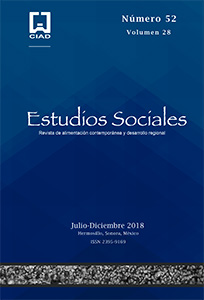El gusto de los pesticidas en el vino: con una pequeña guía para reconocer el gusto de los pesticidas en el vino
The taste of pesticides in wine: With a short guide to recognize the taste of pesticides in wine
Abstract
Afternoon falling, in an old stone room at Mas del Rivet, in Provence, two dozen wine professionals gather for an unprecedented experience to discover the taste of pesticides in blind tasting. The hands head towards the glasses, the looks cross with suspicion, the effluvia of the white wines, one organic, the other not, sprinkle the knowing noses. Samples of the pesticides found in conventional wine and diluted in water await for comparison in the water in a second row - each one already throws them a suspicious look - but for now the tasters smell, savor and compare both wines. There is a deep silence, in which a joint exclamation resounds (Douzelet and Séralini, 2018: 15, all translations by the authors).
Keywords:
contemporary food, wine, pesticides, environment, taste, consumers.Abstract
Afternoon falling, in an old stone room at Mas del Rivet, in Provence, two dozen wine professionals gather for an unprecedented experience to discover the taste of pesticides in blind tasting. The hands head towards the glasses, the looks cross with suspicion, the effluvia of the white wines, one organic, the other not, sprinkle the knowing noses. Samples of the pesticides found in conventional wine and diluted in water await for comparison in the water in a second row - each one already throws them a suspicious look - but for now the tasters smell, savor and compare both wines. There is a deep silence, in which a joint exclamation resounds (Douzelet and Séralini, 2018: 15, all translations by the authors).
Keywords:
contemporary food, wine, pesticides, environment, taste, consumers.Downloads
Published
How to Cite
Issue
Section
Para que sean publicados artículos, ensayos y reseñas críticas en Estudios Sociales, la revista debe contar con la aceptación de parte de los autores/autoras de las condiciones siguientes:
1. Los autores conservan los derechos de autor y ceden a la revista el derecho de la primera publicación del trabajo registrado bajo la licencia de Creative Commons Reconocimiento-NoComercial (CC-By-NC) que permite a terceros utilizar lo publicado, siempre y cuando mencionen la autoría del trabajo y a la primera publicación en esta revista.
2. Los autores pueden realizar otros acuerdos contractuales independientes y adicionales para la distribución no exclusiva de la versión del artículo publicado en esta revista (por ejemplo: incluirlo en un repositorio institucional o publicarlo en un libro) siempre y cuando indiquen, claramente, que el trabajo se publicó por primera vez en esta revista.




















